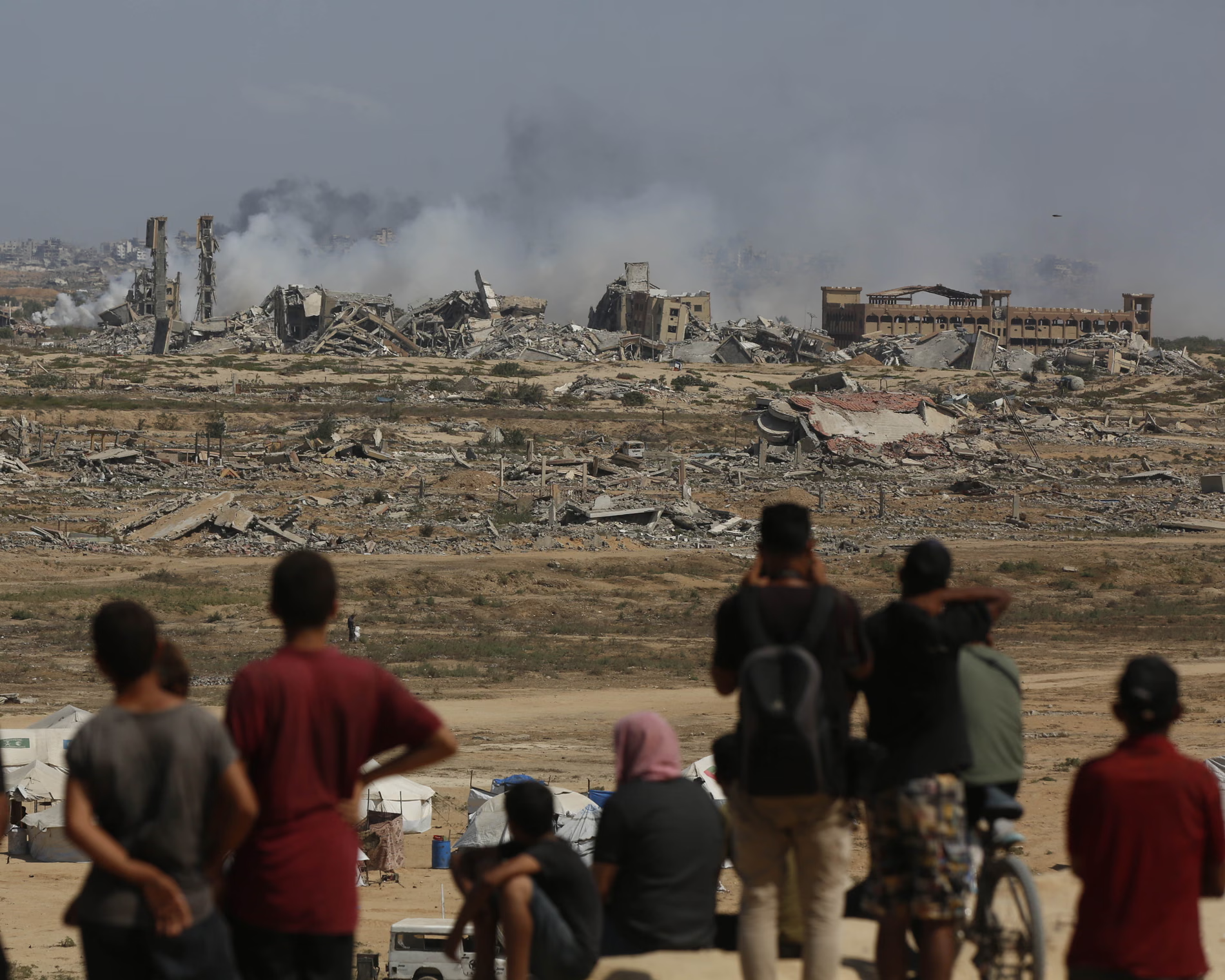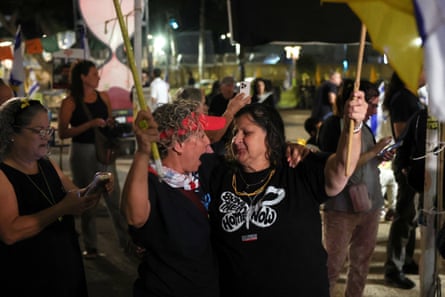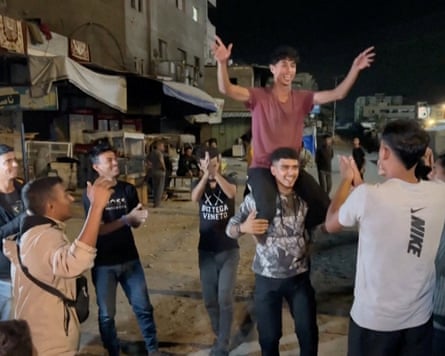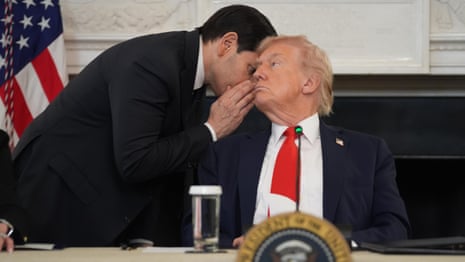Trump ceasefire deal to end war in Gaza agreed by Israel and Hamas

Israel and Hamas have agreed to the initial phase of a “peace plan” in Gaza, pausing hostilities in the devastated territory and bringing the best hope yet of a definitive end to a bloody two-year conflict that has killed tens of thousands, destabilised much of the Middle East and prompted protests across the world.
Donald Trump announced the agreement on his Truth Social network saying all of the hostages held in Gaza would be released soon and Israel would withdraw troops to an agreed upon line as the first step to a “Strong, Durable, and Everlasting Peace”.
Hamas said on Thursday it had agreed the US president’s proposal and confirmed the deal includes an Israeli withdrawal from the enclave and a hostage-prisoner exchange.
There was celebration among Palestinians in Gaza and among Israelis, though few anywhere needed reminding that two previous deals have failed to end the war.
The 20 hostages believed to be still alive may be released as early as this weekend, with sources saying as many as 1,700 Palestinian prisoners could be freed from Israeli jails within 72 hours of the deals signing, which is expected to be Thursday. Hamas called on Trump and guarantor states to ensure Israel fully implements the ceasefire.
In an interview later on Wednesday, Trump said he believed the hostages would be “coming back” Monday.
Responding to the announcement, the Israeli prime minister, Benjamin Netanyahu, welcomed “a great day for Israel”.
“This is a diplomatic success and a national and moral victory for the State of Israel … From the beginning, I made it clear: we will not rest until all our hostages return and all our goals are achieved,” he said.

Israel’s security cabinet will meet on Thursday to approve the release of Palestinian prisoners and, despite opposition from far right members of the ruling coalition government , is unlikely to reject it.
In Tel Aviv, the families of hostages and their supporters started chanting “Nobel prize to Trump” as they gathered in the early hours of the morning. Some popped open a bottle of champagne and cheered. Crying tears of joy, families hugged previously released hostages as the square continued to fill with Israelis.
Palestinians in Gaza reacted to the news with a mix of joy and disbelief. “Thank God for the ceasefire, the end of bloodshed and killing,” said Abdul Majeed abd Rabbo, in the southern Gaza city of Khan Younis.
“I am not the only one happy, all of the Gaza Strip is happy, all the Arab people, all of the world is happy with the ceasefire and the end of bloodshed.”
Trump hailed what he said was a “great day” for the Arab and Muslim world, Israel and all surrounding nations, as well as the US.
“We thank the mediators from Qatar, Egypt, and Turkey, who worked with us to make this Historic and Unprecedented Event happen. BLESSED ARE THE PEACEMAKERS!” he posted.
Netanyahu and Trump spoke by phone and congratulated each other on the agreement on Wednesday, and the Israeli prime minister invited the president to address Israel’s parliament, according to Netanyahu’s office.
The UN chief, António Guterres, welcomed the Israel-Hamas agreement and called on all parties to “abide fully” by its terms.

Speaking from India, UK prime minister Keir Starmer called it a moment of “profound relief” and said he was “grateful for the tireless diplomatic efforts of Egypt, Qatar, Turkiye and the United States, supported by our regional partners, in securing this crucial first step.”
“This agreement must now be implemented in full, without delay, and accompanied by the immediate lifting of all restrictions on life-saving humanitarian aid to Gaza,” he said.
Successful completion of the deal would mark the biggest foreign policy achievement so far for Trump, who took office in January promising to quickly end the wars in Gaza and Ukraine, only to be confronted with obstacles and complexities he had apparently not foreseen.
Senior envoys from the US, Qatar and Turkey had joined the talks in the Egyptian Red Sea resort of Sharm-el-Sheikh this week, apparently adding momentum to discussions launched on Monday. Trump sent his son-in-law Jared Kushner and special envoy Steve Witkoff.
Signs that a deal was close came earlier on Wednesday during a White House roundtable, as secretary of state Marco Rubio handed the president a handwritten note with the words “very close” underlined.
“You need to approve a Truth Social post soon so you can announce deal first,” read the hand-scrawled note on White House stationery. After reading the message, the text of which was captured by an Associated Press photographer.

Many of the details of the agreement reached after 3 days of indirect talks in the Egyptian Red Sea resort of Sharm el-Sheikh remain unclear and challenges of implementing its terms are immense.
If negotiators have closed gaps between Hamas and Israel over the details of the first phase of the 21-point plan announced by Trump in the White House last week, it was not immediately certain whether the parties had made any progress on thornier questions, such as how Hamas will be disarmed, as Netanyahu has demanded, and eventual governance of Gaza.
But the agreement, if implemented, would bring the two sides closer than any previous effort to halt a war that had evolved into a regional conflict, drawing in countries such as Iran, Yemen and Lebanon, and reshaping the Middle East. One earlier ceasefire lasted just ten days, the other six weeks.
After the announcement of the deal, Trump told Fox News that the US would play a role in helping to rebuild war-torn Gaza.
“We’ll be involved in helping them make it successful, and helping it stay peaceful,” the president said, adding he was “very confident there’ll be peace in the Middle East.”
If few need reminding of how hard it will be to win a durable peace, no one is ignorant of the potential cost of further hostilities.
More than 67,000, mostly civilians, have been killed in the relentless Israeli offensive with more than 170,000 injured. Some 20,000 children are among the dead. Much of Gaza has been reduced to ruins, its people now homeless and destitute in the rubble of their homes among barren fields and broken roads. Witnesses describe entire neighbourhoods, even towns, reduced to fine gravel. Thousands more casualties are thought to be buried and yet to be identified.
About 1,200 people, also mostly civilians, were killed by Hamas militants in the raid on Israel of 7 October, the worst such loss in the history of the country. A further 251 were taken hostage. Hundreds of Israeli servicemen and women have died in the war in Gaza. Hamas has already said that it will have difficulty locating the remains of all the dead hostages.
In recent days, Israel reduced the intensity of its military campaign at Trump’s behest, but it has not halted strikes altogether. Gaza medical authorities reported eight people killed in Israeli strikes in the past 24 hours, the lowest toll for weeks. Daily death tolls had been about 10 times as high over the past month as Israeli forces advance on Gaza City.Even if aid surges in, through the UN and the Red Crescent as specified under Trump’s plan, hundreds of thousands will still not have enough food or shelter.
The war in Gaza has spilled across the region, triggering further conflicts in Lebanon, Yemen and Iran. The relief of many regional rulers, who faced waves of popular anger, will be great, if tempered with some anxiety about what may follow in Gaza. They will now have to answer the question of who will provide troops for the promised stabilisation force in Gaza or pay for its reconstruction, which will take decades.
Agence France-Presse, the Associated Press and Reuters contributed reporting

